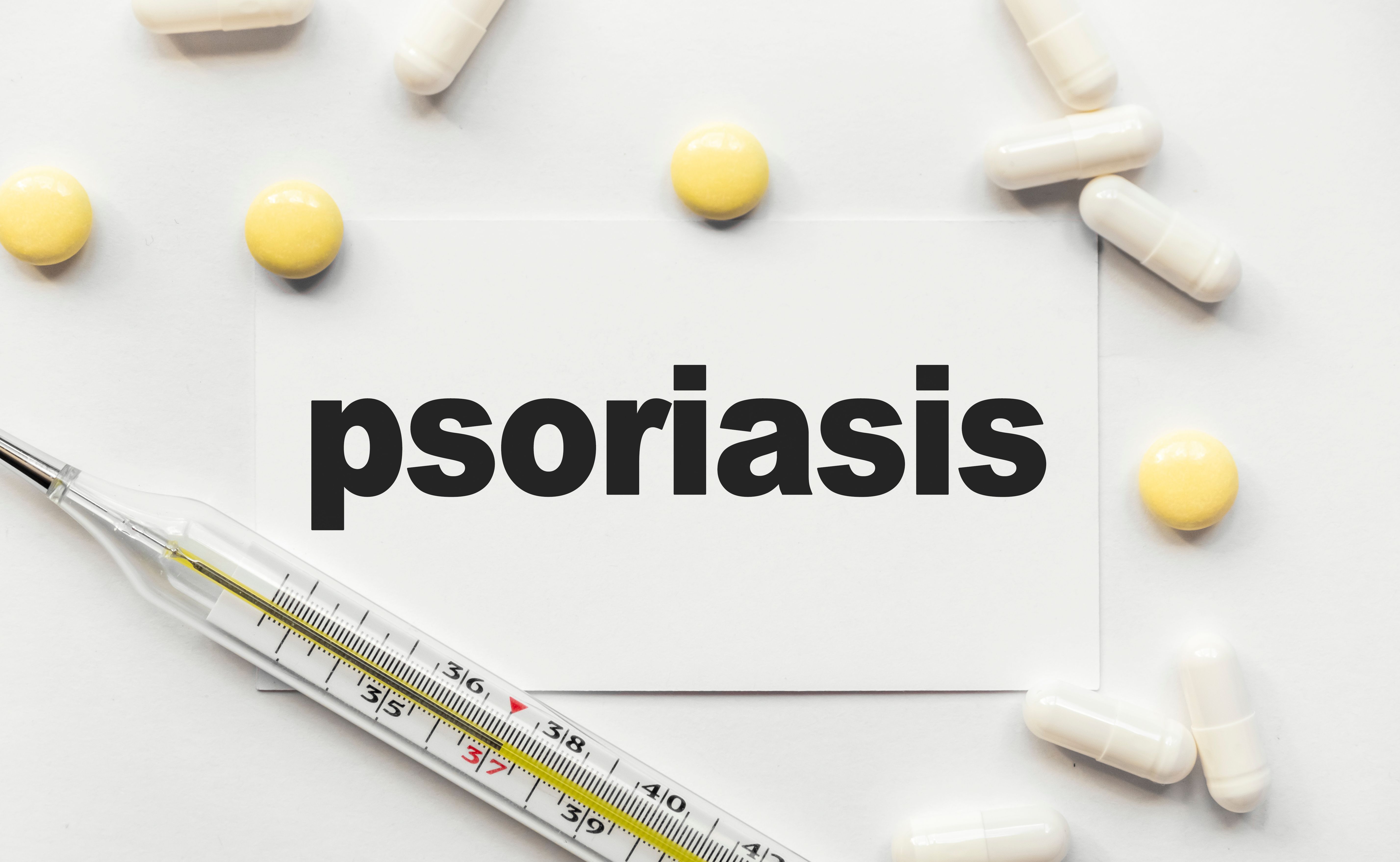Article
Tildrakizumab in Patients With Psoriasis: Three-Year Efficacy Results From reSURFACE 1 and reSURFACE 2 in Those With and Without Metabolic Syndrome
Author(s):
Background
Metabolic syndrome (MetS) may be associated with a decreased patient response on the Psoriasis Area and Severity Index (PASI) and a reduction in the long-term drug survival of biologic therapy.1-4 Tildrakizumab (TIL) is a high‐affinity, humanized, immunoglobulin G1κ, anti—interleukin-23p19 monoclonal antibody indicated for the treatment of chronic plaque psoriasis.3-5 The efficacy and safety of TIL were previously assessed in patients who met the National Cholesterol Education Program-Adult Treatment Panel III criteria for MetS (eg, elevated blood pressure, body mass index [BMI], triglycerides, and glucose) and compared with those without MetS.3,4,6,7 After 1 year of treatment, TIL efficacy and safety differed minimally between patients with and without MetS.3,4,7 Presented below are updated results on the efficacy and safety of TIL in patients with psoriasis with and without MetS after a follow-up period of 3 years.3,4
Methods
Post hoc analyses were conducted using data from 2 phase 3, double-blind, randomized controlled studies (reSURFACE 1 [NCT01722331] and reSURFACE 2 [NCT01729754]) that included patients aged at least 18 years with moderate-to-severe chronic plaque psoriasis.3,4,8 TIL 100 or 200 mg was given at weeks 0 and 4 and every 12 weeks thereafter until week 220 in reSURFACE 1 and until week 244 in reSURFACE 2.3,4 In reSURFACE 2, additional patients were administered etanercept twice weekly until week 16 and once weekly until week 28.4 In both studies, the efficacy of TIL was assessed by the proportion of patients with at least 75% improvement in their PASI score from baseline (PASI 75), the proportion of patients with at least 90% improvement in PASI score from baseline (PASI 90), and the proportion of patients with 100% improvement in PASI score from baseline (PASI 100), as well as median and absolute changes from baseline in PASI score up to week 148, stratified by MetS status.3,4
Results
reSURFACE 1
Among 124 patients who received TIL 100 mg continuously and 147 patients who received TIL 200 mg continuously, 26 (21%) and 34 (23%), respectively, had MetS. At baseline, patients with MetS had a higher median weight, BMI, and prevalence of cardiovascular disease and diabetes than those without MetS; other demographic and disease characteristics were similar between groups. The proportions of patients in the TIL 100-mg group who achieved PASI 75 at week 52 were similar among those with and without MetS (85% vs 86%, respectively). These results were comparable at week 100 (65% vs 76%) and week 148 (69% vs 71%). The percentages of PASI 75/90/100 responders in the TIL 200-mg group with and without MetS were also comparable at week 52 (76% vs 76%, respectively), week 100 (68% vs 81%), and week 148 (71% vs 74%).In patients with MetS, overall PASI scores decreased from baseline to week 148 by 89% (TIL 100 mg) and 88% (TIL 200 mg), and in those without MetS, overall PASI scores decreased by 92% (TIL 100 mg) and 91% (TIL 200 mg).3
reSURFACE 2
Among 214 patients who received TIL 100 mg continuously and 160 patients who received TIL 200 mg continuously, 44 (21%) and 30 (19%), respectively, had MetS at baseline. Also at baseline, those with MetS had higher median weight, BMI, and prevalence of cardiovascular disease and diabetes than those without MetS; other demographic and disease characteristics were comparable between groups. PASI responses in reSURFACE 2 are shown in the Table.4 In patients with MetS, overall PASI scores decreased from baseline to week 148 by 93% (TIL 100 mg) and 84% (TIL 200 mg), and in those without MetS, overall PASI scores decreased by 96% (TIL 100 mg) and 94% (TIL 200 mg).4
Conclusions
The efficacy of TIL 100 and 200 mg was maintained over 148 weeks and was similar in patients with and without MetS.3,4
References
1. Talamonti M, Galluzzo M, Bernardini N, et al. Psoriasis Area and Severity Index response in moderate-severe psoriatic patients switched to adalimumab: results from the OPPSA study. J Eur Acad Dermatol Venereol. 2018;32(10):1737-1744. doi: 10.1111/jdv.15077.
2. Jacobi A, Rustenbach SJ, Augustin M. Comorbidity as a predictor for drug survival of biologic therapy in patients with psoriasis. Int J Dermatol. 2016;55(3):296-302. doi: 10.1111/ijd.12879.
3. Lebwohl MG, Leonardi C, Menter A, et al. Tildrakizumab efficacy by metabolic syndrome status in psoriasis: post hoc analysis of 3-year data from the phase 3 reSURFACE 1 study. Poster presented at: 28th European Academy of Dermatology and Venereology Congress; October 9-13, 2019; Madrid, Spain.
4. Gottlieb AB, Leonardi C, Mehta NN, et al. Tildrakizumab efficacy by metabolic syndrome status in psoriasis: post hoc analysis of 3-year data from the phase 3 reSURFACE 2 study. Poster presented at: 28th European Academy of Dermatology and Venereology Congress; October 9-13, 2019; Madrid, Spain.
5. Ilumya [prescribing information]. Cranbury, NJ: Sun Pharmaceutical Industries, Inc. 2018. ilumya.com/pdfs/Sun_Pharma_ILUMYA_US_Prescribing_Information.pdf. Accessed October 18, 2019.
6. Expert Panel on Detection, Evaluation, and Treatment of High Blood Cholesterol in Adults. Executive summary of the third report of the National Cholesterol Education Program (NCEP) Expert Panel on Detection, Evaluation, and Treatment of High Blood Cholesterol in Adults (Adult Treatment Panel III). JAMA. 2001;285(19):2486-2497.
7. Lebwohl MG, Leonardi C, Mehta NN, et al. Tildrakizumab efficacy and drug survival by metabolic syndrome status in psoriasis: post hoc analysis of 2 phase 3 clinical studies (reSURFACE 1 and reSURFACE 2). Abstract presented at: American Academy of Dermatology Annual Meeting; March 1-5, 2019; Washington, DC. server.aad.org/eposters/Submissions/getFile.aspx?id=10048&type=sub.
8. Reich K, Papp KA, Blauvelt A, et al. Tildrakizumab versus placebo or etanercept for chronic plaque psoriasis (reSURFACE 1 and reSURFACE 2): results from two randomised controlled, phase 3 trials. Lancet. 2017;390(10091):276-288. doi: 10.1016/S0140-6736(17)31279-5.





